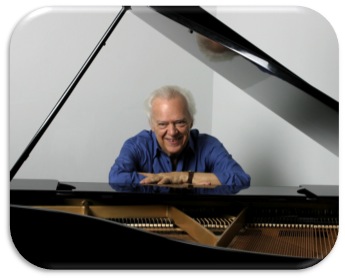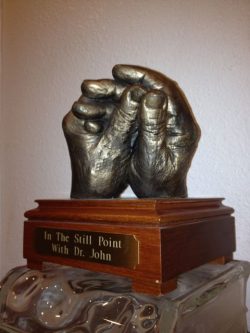History
Dr John E. Upledger DO, OMM 1932-2012
One of the ‘Next wave of innovators’ according to Time Magazine (2000)
CST was coined, developed and structured by Dr John Upledger. What we now sometimes refer to as Upledger CST (as it has distinguishing features from other trainings) was pioneered, developed and structured by osteopathic physician Dr John E. Upledger.
Early in the 1970s, during a surgery on a patient’s neck, Dr Upledger was fascinated to observe the distinct, regular movement of the dural tube (the tough membrane that surrounds and protects the spinal cord). Curious as to whether this movement had previously been investigated, he discovered the work of William Sutherland, who had developed Cranial Osteopathy. Dr Sutherland worked with a rhythm of the head, but his claims that the sutures were moveable was queried by other osteopaths. At the time, there was an organisation called the Cranial Academy, and they asked Dr Upledger to do some research into whether or not this was what was really happening.

“Call me crazy if you want.
What can I say?
Set your positive intentions and believe
in the endless potential of the human body. Things just might work out.”
So began his eight years at Michigan State University, collaborating with a team of scientists, where he served as a clinical researcher and Professor of Biomechanics. During his time there, he did show that the tissue in the suture differs from the tissue of bone and that the structures within this could allow for very small amounts of movement (we show you these histological slides in the CST1 class).
He also researched what was happening between his hands and the client during treatments, and was able to show that there is a transfer of energy and a change in electromagnetic frequencies that can be measured; he was able to gain a greater understanding of some of the key aspects of this cranial work, and found that many problems previously thought to be confined to the head can, in fact, have primary causes elsewhere in the body.
Dr Upledger’s subsequent research in this field led him to feel that, while the Cranial Osteopaths were working with the alignment of the bones, these bones were also ‘slaves to the fascia’, that is, the dural membranes that attach firmly to the inside of the head and then continue down the spinal column. So the techniques he adapted and developed enabled release of restrictions and tension patterns, not only in the bones but also in the membranes below. As the nerves that exit the cranium and spinal cord are also surrounded by fascia that is a continuum of the membranes, any tensions and issues in the rest of the body can affect the dural tube and craniosacral system. Hence we have techniques that treat the rest of the body too.
In those years, and since then, Dr Upledger developed the methodology to treat these membranes, and the body in relation to them. Because this was different from what the Cranial Osteopaths were doing, he began calling it CranioSacral Therapy instead. He wrote the first text in 1983, and followed up with another four key text books and a few more easier reads for the lay person over the years, as he expanded and refined his approach to this work and treated and taught thousands of people.
Then people wanted to know what he was doing… Why? Because of the results he and others he had trained were getting with patients.
Textbooks:
CranioSacral Therapy
CranioSacral Therapy II – Beyond The Dura
SomatoEmotional Release and Beyond
Your Inner Physician and You
A Brain is Born
Cell Talk
CranioSacral Therapy: Touchstone for Natural Healing
SER: Deciphering the Language of Life
Starting to teach
So, in 1985, as more and more people were clamouring to know what it was he was doing when he worked, he opened the Upledger Institute International to format his teaching. The Upledger Institute began as a clinical and educational training centre in Palm Beach Gardens, Florida. He also taught a lot of other people to teach, as more and more people around the world wanted to be able to learn how to use these techniques. There are now satellites all round the world, and teachers and practitioners in over 100 countries.
The Upledger Institute UK, started by John and Carol Page, ran its first course in the UK in 1994, and since 2010 it has been run by Caroline Barrow. In this country, we run between 12 and 16 courses a year and are working on building the community, (the website!), a research base, the number of qualified practitioners and the understanding and awareness of this intriguing therapy.
As the awareness of CST grows, so too does our need for practitioners. Please find out more about our training and see if it might be right for you.

A bronze cast of Dr Upledger’s hands in the position for giving a stillpoint.
Courtesy of Carol McLellan
